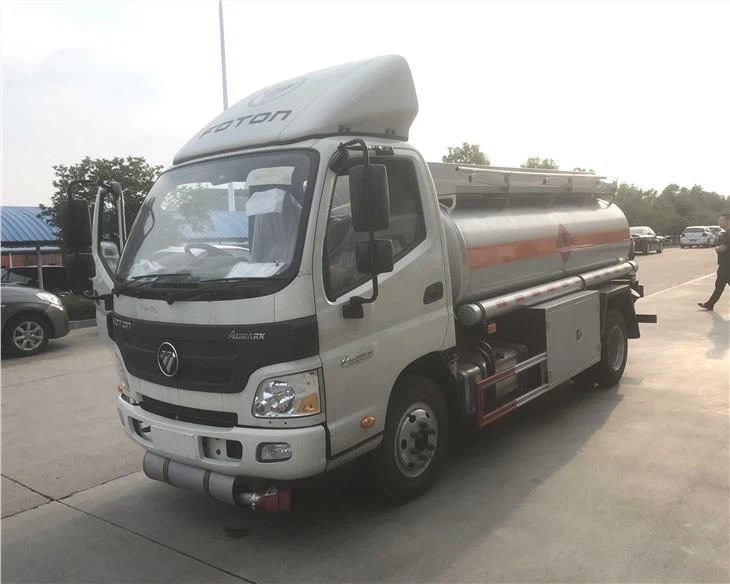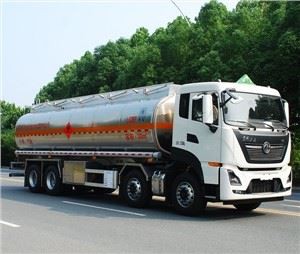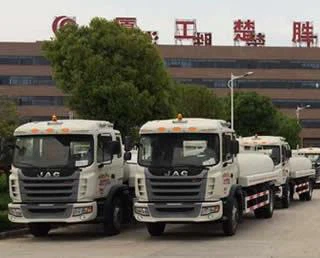Tank Truck Safety: A Comprehensive Guide

Tank trucks are crucial for transporting liquids, gases, and hazardous materials. However, their operation comes with inherent risks. Proper safety measures are essential to protect drivers, other road users, and the environment. This article will delve into the different aspects of tank truck safety, addressing regulations, training, operational practices, and emergency responses.
Understanding Tank Trucks
What is a Tank Truck?
A tank truck, also known as a tank vehicle or tank lorry, is a specialized vehicle designed to transport liquids or gases. These trucks come in various sizes and configurations, depending on the nature of the cargo. Common types include:
- Chemical Tankers
- Fuel Tankers
- Food Grade Tankers
- Liquid Waste Tankers
- Gas Tankers
Importance of Safety in Tank Truck Operations
Tank trucks frequently transport hazardous materials, making safety paramount. A minor oversight can result in serious accidents, such as spills, fires, or explosions. Therefore, implementing stringent safety measures is vital not just for the vehicle operators but also for public health and the environment.

Regulatory Framework for Tank Truck Safety
Key Regulatory Bodies
Several regulatory bodies oversee tank truck operations. Some of the most important include:
- Federal Motor Carrier Safety Administration (FMCSA): Regulates commercial vehicle operations in the United States.
- Environmental Protection Agency (EPA): Sets regulations regarding hazardous materials and environmental compliance.
- Occupational Safety and Health Administration (OSHA): Ensures workplace safety related to tank truck operations.
Compliance Requirements
Operators must adhere to strict compliance requirements, including:
- Obtaining necessary permits for transporting hazardous materials.
- Ensuring drivers undergo proper training and certification.
- Maintaining vehicle inspections and certifications as required by law.

Training and Certification for Tank Truck Operators
Importance of Training
Proper training is essential for tank truck operators to ensure safety and compliance. Well-trained drivers are better equipped to handle emergencies and understand the ramifications of their roles.
Types of Training Programs
- Hazardous Materials Training: Focuses on the transportation of hazardous materials, regulations, and safety procedures.
- Defensive Driving Courses: Equips drivers with techniques to prevent accidents.
- Emergency Response Training: Prepares drivers to handle spills, leaks, and other emergencies effectively.
Operational Practices for Safe Tank Truck Usage
Pre-Trip Inspections
Before any journey, drivers must conduct thorough pre-trip inspections, which should include:
- Checking for leaks in the tank and fittings.
- Inspections for tire pressure and tread conditions.
- Ensuring all safety equipment is in place, like fire extinguishers and spill kits.
Loading and Unloading Procedures
Following strict loading and unloading procedures is critical to minimize spills. Here are some best practices:
- Always use proper personal protective equipment (PPE).
- Ensure the tank is properly grounded to prevent static electricity.
- Monitor the loading/unloading process closely and avoid distractions.
Driving Best Practices
When driving a tank truck, operators should follow these best practices:
- Maintain a safe following distance to accommodate for the truck’s size and cargo weight.
- Avoid sudden stops or sharp turns to prevent spills and maintain cargo stability.
- Be aware of weight limits, especially with loaded tankers, to prevent accidents.
Emergency Response Procedures
Preparing for Emergencies
Having a clear plan for emergencies is crucial. Companies should develop and regularly review emergency response plans.
Action Steps in Case of an Incident
In the event of a spill or leak, follow these steps:
- Ensure the area is safe and evacuate non-essential personnel.
- Provide first aid to anyone injured.
- Contact emergency services immediately.
- Contain the spill if it is safe to do so.
- Follow the emergency response plan and report the incident to relevant authorities.
Environmental Considerations
Impact of Tank Truck Incidents on the Environment
Accidents involving tank trucks can lead to significant environmental damage, including:
- Soil contamination.
- Water pollution from spills or leaks.
- Air quality issues from vapor release.
Best Practices for Environmental Protection
To minimize environmental impact, companies should:
- Implement spill prevention measures.
- Encourage drivers to report any leaks immediately.
- Regularly review and improve safety procedures to address potential environmental risks.
Real-Life Examples of Tank Truck Incidents
Case Study 1: A Fuel Spill Incident
In 2022, a fuel tanker overturned on a highway, resulting in a large spill. Emergency services managed to contain the spill, but it highlighted the need for better driver training and stricter adherence to speed limits.
Case Study 2: Chemical Leak
In another instance, a chemical tanker experienced a leak during unloading. Quick response from trained personnel minimized environmental damage and ensured public safety.
Regular Maintenance and Inspections
Importance of Regular Maintenance
Regular maintenance is essential for tank truck safety. Properly maintained equipment reduces the risk of accidents and enhances the vehicle’s reliability.
Maintenance Checklist
| Item | Frequency |
|---|---|
| Brake inspection | Monthly |
| Tank integrity check | Every 6 months |
| Fluid levels check | Weekly |
| Safety equipment inspection | Monthly |
FAQ Section
What should I do if I witness a tank truck accident?
If you witness an accident, call emergency services immediately, provide the necessary details, and ensure your safety before helping anyone if it’s safe to do so.
Are tank truck drivers required to have special licenses?
Yes, tank truck drivers must have a commercial driver’s license (CDL) with a hazmat endorsement and complete additional training for specific types of cargo.
How can I report unsafe tank truck operations?
If you notice unsafe tank truck operations or violations, you can report them to local authorities or the FMCSA.
What are the common hazardous materials transported by tank trucks?
Common hazardous materials include gasoline, diesel, chemicals, and liquid food products, each requiring specific handling and safety measures.
What protective equipment should tank truck drivers use?

Tank truck drivers should use gloves, goggles, hard hats, and, in some cases, respiratory protection, especially when handling hazardous materials.
What is the role of a spill kit in tank truck operations?
A spill kit is crucial for quickly addressing leaks or spills. It typically contains absorbent materials, containment barriers, and protective equipment to manage incidents effectively.
